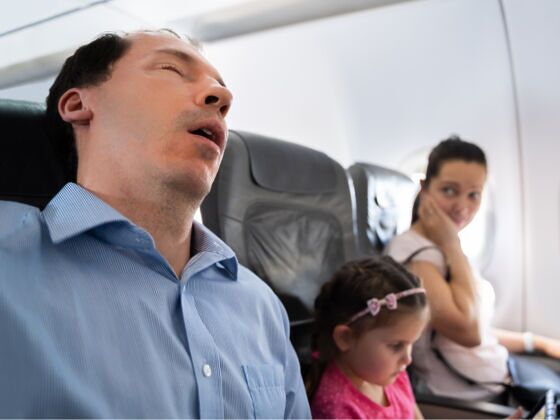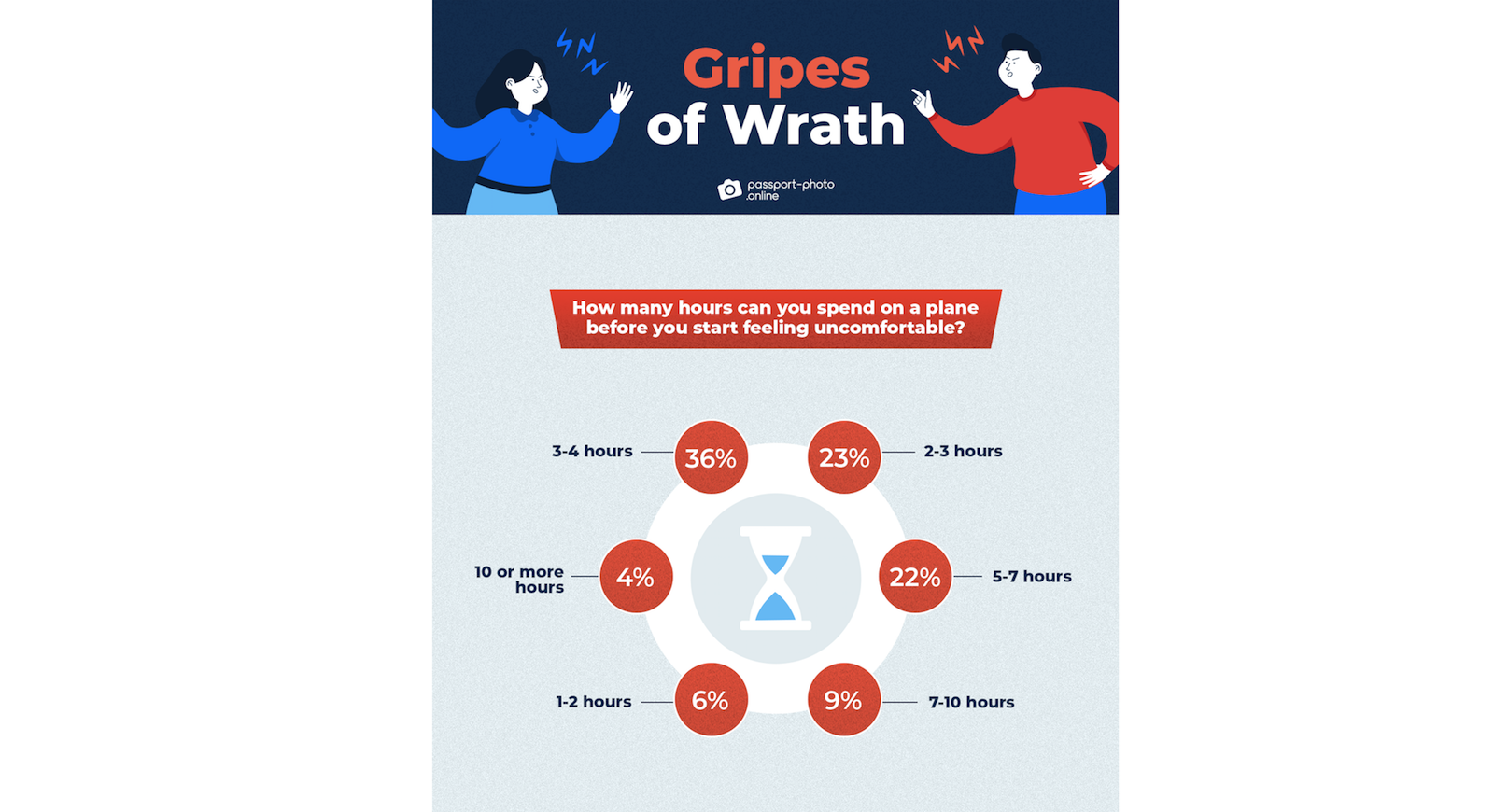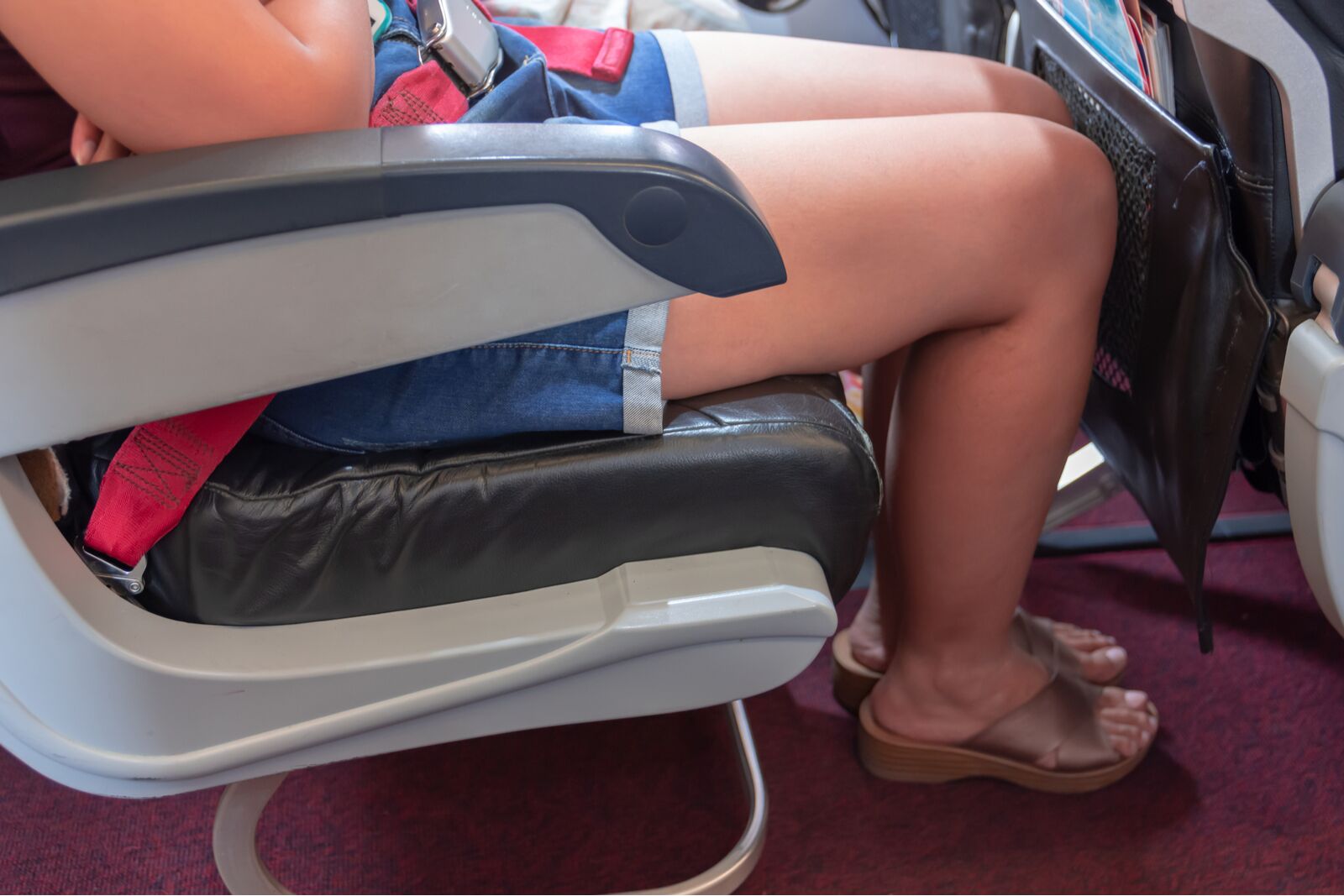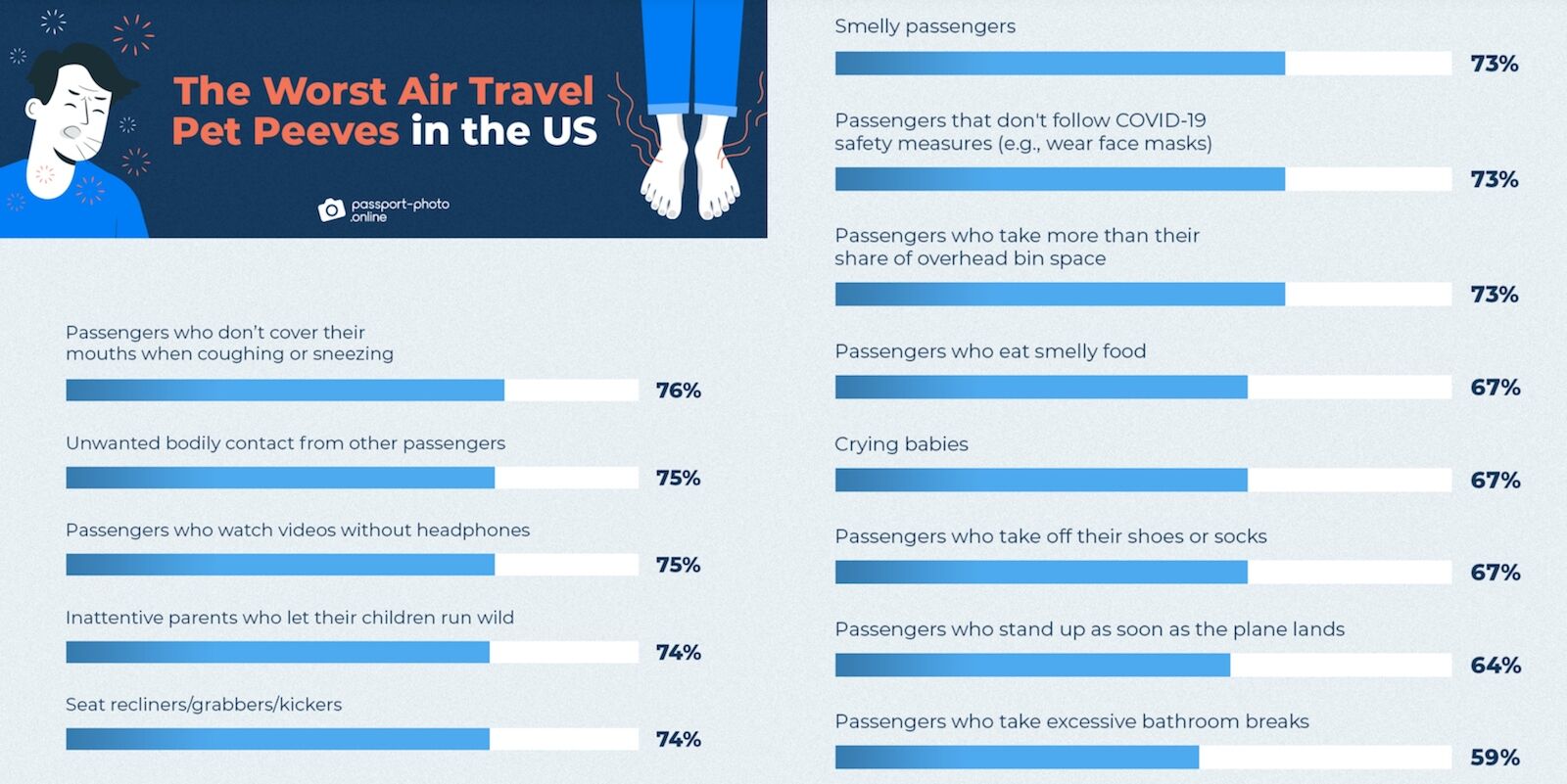How long can you sit on a plane before your butt starts going numb or low back starts hurting?
Given the complaints in the last five years about airlines doing all they can to nickel and dime customers, including making narrower seats with less leg room and less padding, it’s a bit of a surprise to see that most people can get through several hours of flying in comfort. That’s according to according to a new survey from PhotoAID, a company that takes online, biometric-ready photos for travel documents. They surveyed 1,000 users in February 2022 with quality-control questions and reviewed the answers with their data team. The survey was focused on what users consider to be bad airplane behavior and what annoys them while flying.




